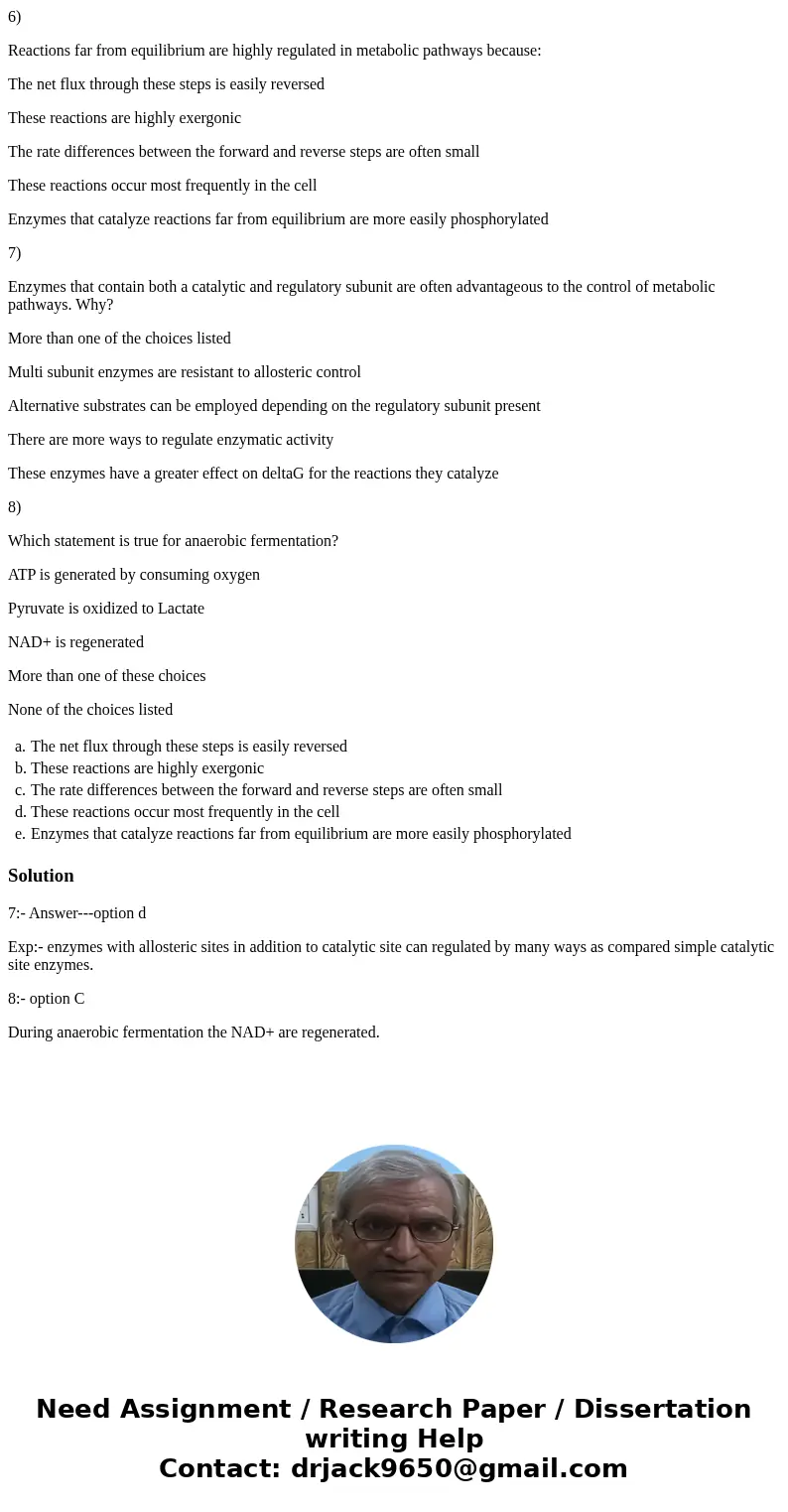6 Reactions far from equilibrium are highly regulated in met
6)
Reactions far from equilibrium are highly regulated in metabolic pathways because:
The net flux through these steps is easily reversed
These reactions are highly exergonic
The rate differences between the forward and reverse steps are often small
These reactions occur most frequently in the cell
Enzymes that catalyze reactions far from equilibrium are more easily phosphorylated
7)
Enzymes that contain both a catalytic and regulatory subunit are often advantageous to the control of metabolic pathways. Why?
More than one of the choices listed
Multi subunit enzymes are resistant to allosteric control
Alternative substrates can be employed depending on the regulatory subunit present
There are more ways to regulate enzymatic activity
These enzymes have a greater effect on deltaG for the reactions they catalyze
8)
Which statement is true for anaerobic fermentation?
ATP is generated by consuming oxygen
Pyruvate is oxidized to Lactate
NAD+ is regenerated
More than one of these choices
None of the choices listed
| a. | The net flux through these steps is easily reversed | |
| b. | These reactions are highly exergonic | |
| c. | The rate differences between the forward and reverse steps are often small | |
| d. | These reactions occur most frequently in the cell | |
| e. | Enzymes that catalyze reactions far from equilibrium are more easily phosphorylated |
Solution
7:- Answer---option d
Exp:- enzymes with allosteric sites in addition to catalytic site can regulated by many ways as compared simple catalytic site enzymes.
8:- option C
During anaerobic fermentation the NAD+ are regenerated.

 Homework Sourse
Homework Sourse